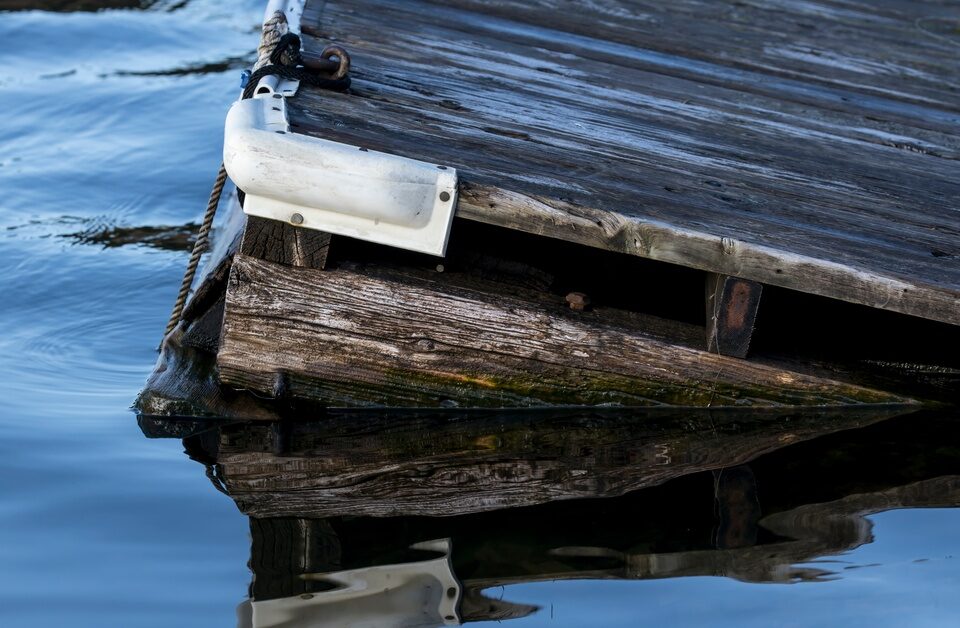Do I Need to Anchor My Dock to the Lake Bottom?
This is a very common question from first time lakefront owners. Their concerns are valid. These days many docks are made from light weight aluminum materials for ease of installation and removal. Dock frames and decking made of wood float in the water given the opportunity. Summer time thunderstorms kick up 2ft rollers at a moment’s notice. Add those factors to the need for some folks to tie their boat directly to their docks, and it’s a wonder how ANY dock can hold its position.
Anchoring a dock can be a miserable affair. One method is to pound support pipes into the gravel. This takes a toll on one’s back (or their friend’s backs if they are crafty enough to recruit help). Of course then you have to figure out a way to get the pipes out in the fall. You can’t pound up! Another option is to use augers on the bottom of your support pipes. The husband holds the dock frame while the wife uses a pipe wrench to screw the support pipes into the lake bottom. Hardly a recipe for marital harmony. Personally, I have no interest in doing work that doesn’t need to be done. You shouldn’t either.
As with many things in life, 1 design point is the source of most of the trouble and grief when it comes to docks holding their position all season long. On a normal, calm day, the only part of the dock that is in the water is the support pipes. Because the support pipes have a relatively low surface area in proportion to the entire dock, waves easily pass through without raising a fuss. This is the key. Many lake owners like to keep their dock surface so low to the water that even a normal lake chop rolls over the top, but these folks do so at their own risk. Because there is so much surface area on the wooden portion of the dock – and the fact that water is incompressible – waves hitting the underside of your dock is what will cause movement. It’s the same thing that keeps your boats afloat. Buoyancy! Therefore, my advice to cottage owners is to assess typical worst case wave conditions. If a nasty summer time thunderstorm will kick up waves that are 24 inches tall, keep your dock 26 inches out of the water. I had a customer install one of my docks on an eastern bay of Lake Ontario. When the hurricane that hit the northeast in fall 0f 2011 rolled through, his neighbor’s dock tipped over and floated away – along with his boat. My customers dock held its position. The highest waves just barely touched the bottom of his decking. If you’re tying your boat to your dock, check out my blog post here for tips on that.
For my customers, I recommend a simple mud pad outfitted to the bottom of your support pipe. This makes for easy installation and removal as the seasons change. No augers, no pounding, and no frustration. If we avoid the problem, we have no need to come up with a solution. Easy Peasy.



